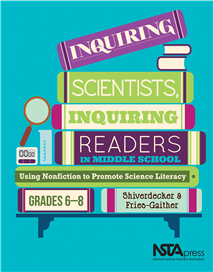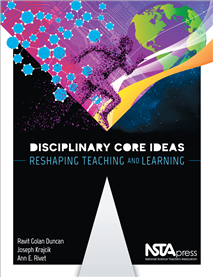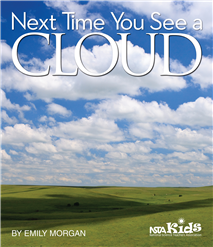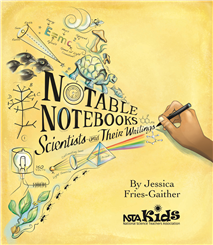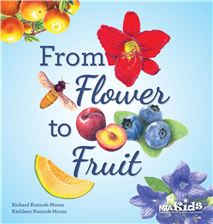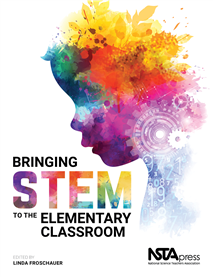All Book Chapters
Book Chapter
This lesson helps students to recognize that interventions can slow or stop the negative impact of human activities on the environment, identify strategies for reusing natural resources, investigate ways to reduce municipal solid waste, draw conclusi...
Book Chapter
This lesson helps students to develop and use a model of the Sun–Earth system to explain: the relationship between the amount of sunlight and the season; the relationship between the angle of incidence of sunlight and the season; and the reason the...
Book Chapter
This lesson helps students explain that Earth’s history is broken up into smaller time periods and rocks and fossils provide evidence for these time periods. Students synthesize information gathered through investigations and text. The investigatio...
Book Chapter
This lesson helps students recognize that secondhand evidence can be used to answer scientific questions, describe how organisms change over time in response to environmental pressures, compare anatomical differences between modern and ancestral orga...
Book Chapter
Core Idea PS4: Waves and Their Applications in Technologies for Information Transfer
Like all enthusiastic teachers, you want your students to see the connections between important science concepts so they can grasp how the world works now—and maybe even make it work better in the future. But how exactly do you help them learn and ...
Book Chapter
Great news for multitasking middle school teachers: Science educators Terry Shiverdecker and Jessica Fries-Gaither can help you blend inquiry-based science and literacy instruction to support student learning and maximize your time. Several unique fe...
Book Chapter
Next Time You See a Cloud (Sample)
Next time you want to see a show, go outside and look at the sky. The clouds will put on a show for you with their ever-changing shapes and sizes. This book reveals some fascinating science behind these beautiful displays. Author Emily Morgan answers...
Book Chapter
UV or not UV? That Is a Question for Your Sunglasses
What makes a windup toy get up and go? How does an earbud operate? And why does the line you’re waiting in always seem the slowest? Get middle-schoolers engaged in the fascinating science behind familiar items with More Everyday Engineering. Like E...
Book Chapter
The problems in this chapter ask students to identify basic needs of living things and to describe simple life cycles of animals, plants, and fungi. The problems involve students in a number of science practices included in the Next Generation Scienc...
Book Chapter
The problems in this chapter ask students to identify basic needs of living things and to describe simple life cycles of animals, plants, and fungi. The problems involve students in a number of science practices included in the Next Generation Scienc...
Book Chapter
The problems in this chapter ask students to identify basic needs of living things and to describe simple life cycles of animals, plants, and fungi. The problems involve students in a number of science practices included in the Next Generation Scienc...
Book Chapter
The problems in this chapter ask students to identify basic needs of living things and to describe simple life cycles of animals, plants, and fungi. The problems involve students in a number of science practices included in the Next Generation Scienc...
Book Chapter
Fishermen in the Great Lakes are concerned that a growing population of cormorants will harm the perch fishery. In this ecology problem, students are asked to evaluate the problem and propose possible actions. The challenge is to determine if the fis...
Book Chapter
Lake Michigan–A Fragile Ecosystem
Commercial fishermen have noticed declining numbers and smaller sizes of the fish they catch in Lake Michigan, and they want to know how the government’s stocking program is affecting their catch. In this problem, the challenge to students is to he...
Book Chapter
Residents on a 63-acre lake in Montcalm County, Michigan, are concerned about the loss of a once-common insect from the ecosystem. In this problem, the challenge to students is to help the homeowners discover what is happening to the Loon Lake ecosys...
Book Chapter
The plants found in a bog located on the west side of the Rose Lake marsh in Clinton County, Michigan are changing over time. What is causing this change? Is there a human-related problem that needs to be addressed? In this problem, the challenge to ...
Book Chapter
Purple loosestrife is an invasive species of plant that is spreading through North American wetlands. In this problem, the challenge to students is to predict what effect purple loosestrife will have on wetland ecosystem in the future and if anything...
Book Chapter
A group of students wonders how a single cat can have kittens with different coat colors. In this problem, the challenge for students is to explain the difference between cats with pale versus dark coats in terms of DNA, proteins, and traits and expl...
Book Chapter
Black and White and Spots All Over
In this problem, students explore how spotted coat color is inherited in cats. The goal is to figure out the gene for spotting in cats by applying what students learned earlier in this chapter from the snapdragon and bell pepper cases. Students will ...
Book Chapter
In this problem, a group of students tries to explain the genetic cause of calico and tortoiseshell coat color in cats. The challenge to students is to describe the genetics of calico cats by explaining the inheritance of three genes—spotting, bla...
Book Chapter
In this problem, students are asked to determine if all the different-color kittens in a litter could be related to the same father. The challenge to students is to use cat coat color genetics to determine if all of the kittens in a litter could have...
Book Chapter
In this chapter, students wonder how burning a log in a campfire compares to eating a marshmallow. This problem focuses on combustion and metabolism of marshmallows. Marshmallows are a food that is mostly sugar and that students may have experience b...
Book Chapter
In this problem, the challenge to students is to determine in what ways are the matter and energy changes in burning wood similar to and different from those in burning food for energy? What are the matter and energy changes that occur when a plant g...
Book Chapter
This problem focuses on how the body changes the materials of things we eat into our own tissue. How do animals and plants use food? Why do we not become what we eat? Students often wonder if the saying “you are what you eat” makes sense. In this...
Book Chapter
Problem-Based Learning in the Life Science Classroom, K–12 (Book Sample)
Problem-Based Learning in the Life Science Classroom, K–12 offers a great new way to ignite your creativity. Authors Tom McConnell, Joyce Parker, and Janet Eberhardt show you how to engage students with scenarios that represent real-world science ...
Book Chapter
How to Develop an Engineering Design Task
This chapter is a good introduction to the process of designing lessons. It provides a valuable way to start your journey through the many wonderful ideas shared in Bringing STEM to the Elementary Classroom, as well as generic strategies that you can...
Book Chapter
This chapter will assist you in identifying the misconceptions of students who are new to STEM. It provides a valuable way to start your journey through the many wonderful ideas shared in Bringing STEM to the Elementary Classroom, as well as generic ...
Book Chapter
In this chapter, through two different stories, students are introduced to the process—including the frustrations—of designing something to solve a problem. The experiences of the books’ characters are brought into the classroom by having stude...
Book Chapter
More Teaching Through Trade Books
This chapter presents two fiction trade books that can be used to inspire students to design and test various flying machines. It provides opportunities for students to engage in optimizing design solutions through testing and comparing flying machin...
Book Chapter
This chapter shares the seven overlapping and mutually reinforcing strategies teachers used that effectively supported children’s learning in physical science and engineering. Consistent implementation of these teaching strategies requires that pre...
Book Chapter
This chapter shares experiences introducing preschoolers and kindergarteners to engineering through an hour-long lesson about designing structures. The 5E lesson framework remains a useful tool within science education. It represents a way to situate...
Book Chapter
Can a Student Really Do What Engineers Do?
In this chapter, a science teacher educator, a water company informal educator, and a second-grade teacher develop and co-teach a three- to four-day instructional unit within the authentic context of water filtration. This unit was designed to suppor...
Book Chapter
A STEM activity is any activity that integrates the use of science, technology, engineering, and mathematics to solve a problem. This chapter presents a STEM unit that was completed over two weeks in a kindergarten classroom. The unit focused on the ...
Book Chapter
Inviting Engineering Into the Science Lab
This chapter presents examples of two lessons adapted from a second-grade program to incorporate the science and engineering practices into lab activities through the use of guided inquiry, rather than the structured-inquiry approach dictated in the ...
Book Chapter
In this activity, note the steps for redesign, and be open to following a design process, not a rigid the design process. Students may spend a long time exploring the properties of the materials before they begin making purposeful changes to refine t...
Book Chapter
Elephant Trunks and Dolphin Tails
This chapter focuses on how engineers help animals. After some time to brainstorm together, students come up with an idea that engineers may help veterinarians heal sick animals or zookeepers develop safe habitats. An engineering design challenge is ...
Book Chapter
This chapter shares two examples of “classic” science lessons adapted to teach science content through engineering design. It also provides some more general strategies for adapting science investigations to focus on engineering design. In the fi...
Book Chapter
In this activity, students transform STEM journals into E-books while integrating science, technology, and literacy. The chapter brings forward the idea of integrating iPads into the classroom. With the students’ previous experience with Engineerin...



